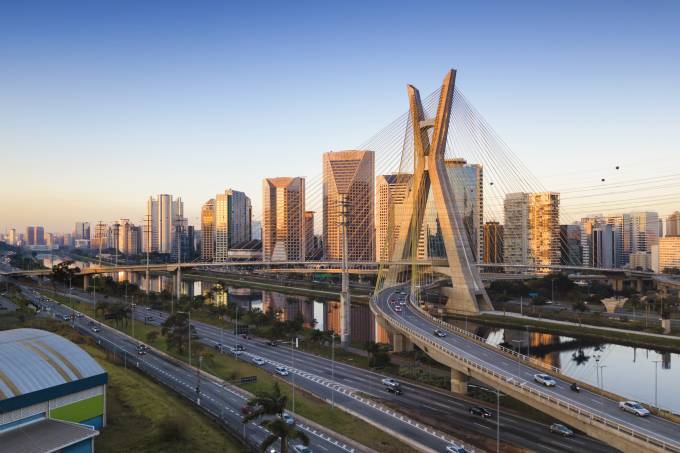From dreamy-hued Instagrams and Tropicália to artistic hubs in beautiful but neglected buildings,get inside the city’s diverse urban sceneCities is.
São Paulo in five words
“Efferverscent chaos of mashed cultures.”
The sound of the city
São Paulo is known as the land of drizzle. Whether harmless showers or heavy storms, it rains quite a bit here. Sometimes it is a problem and some neighbourhoods flood; sometimes it is a blessing because our water system is archaic and we rely on the rain to fill our reservoirs.
What everyone is tuning in to
Although she’s from Rio, Jout Jout is getting people from São Paulo (and all over Brazil) hooked on her super simple yet humorous and smart videoblog. In it she talks about frivolities alongside more serious issues, such as abusive relationships and professional dissatisfaction.
The best venue
In the Centro neighbourhood, there are many beautiful but neglected buildings that have become creative and artistic hubs in the past few years. Farol is one of the most complete and collaborative of these hubs. On different floors of the same building you can find Eduqativo, an institute created to develop new ways of collective education; Líquen, a space for designers finding balance through digital and manual work; Fluxo, a journalism staffroom, dedicated to raw news covered across different platforms; and Balsa, a place for hanging out that has a lovely view from the terrace.
Top of the playlist
Terno Rei is a rising band in São Paulo’s music scene. Their sound is part gloomy, part mellow and they often write about urban loneliness – a subject most Paulistanos can relate to. Later this month they will perform at Primavera Sound Festival in Barcelona.
Favourite local artist
Marina Rheingantz is a young painter who pictures dark and odd landscapes in an almost abstract way. She finds inspiration in memories and images that already exist, from photographic work to the films of Wim Wenders.
The big talking point
In São Paulo, water is an increasingly important issue. In 2014, the city suffered its most severe drought since 1930. Even though it rains a lot – and last February was the wettest month in 20 years – the reservoirs still haven’t filled to more than 5% of capacity.
The look on the street
The look on the street is as diverse as the city itself, but on the whole it’s cosmopolitan and smart, with some lightness and freshness to it – it is a tropical country we live in, after all. And because there can be sun, rain and cold wind in the same day, Paulistanos know how to work their layers.
The best Instagram account
Lane Marinho is a visual artist and crafter with an eye for São Paulo’s best features, capturing beautiful shapes and colours under a dreamy light.
What São Paulo does better than anywhere else …
Immigrant festivals. Whether Italian or Japanese, there are many big traditional festivities held in the city. There is even one festival organised by the Immigration Museum, where immigrant citizens from 20 different countries exhibit their traditional cuisine and culture in order to celebrate São Paulo’s diversity.
The big cultural moment
Most people say the city’s greatest cultural moment was the Brazilian Music festival, which was televised in the late 1960s and has recently inspired a documentary called A Night in ’67. The festival showcased artists from one of the most important and subversive movements in Brazilian cultural history, the Tropicália, including Caetano Veloso, Gilberto Gil and Os Mutantes – artists who were later censored or exiled.
The best street art
Street art is pretty strong in São Paulo. Whether graffiti or just straight-forward pixação – as we call our spiky hieroglyphic tags – you can find it anywhere. Local artist Daniel Melim’s Mural da Luz, as eye-catching and interesting as it is, may not be the most significant in content – a sort of pop-art deconstruction of an advertisement. But, because of its location and integration with the city’s landscape, it has become one of the most memorable and engaging pieces of street art around.








